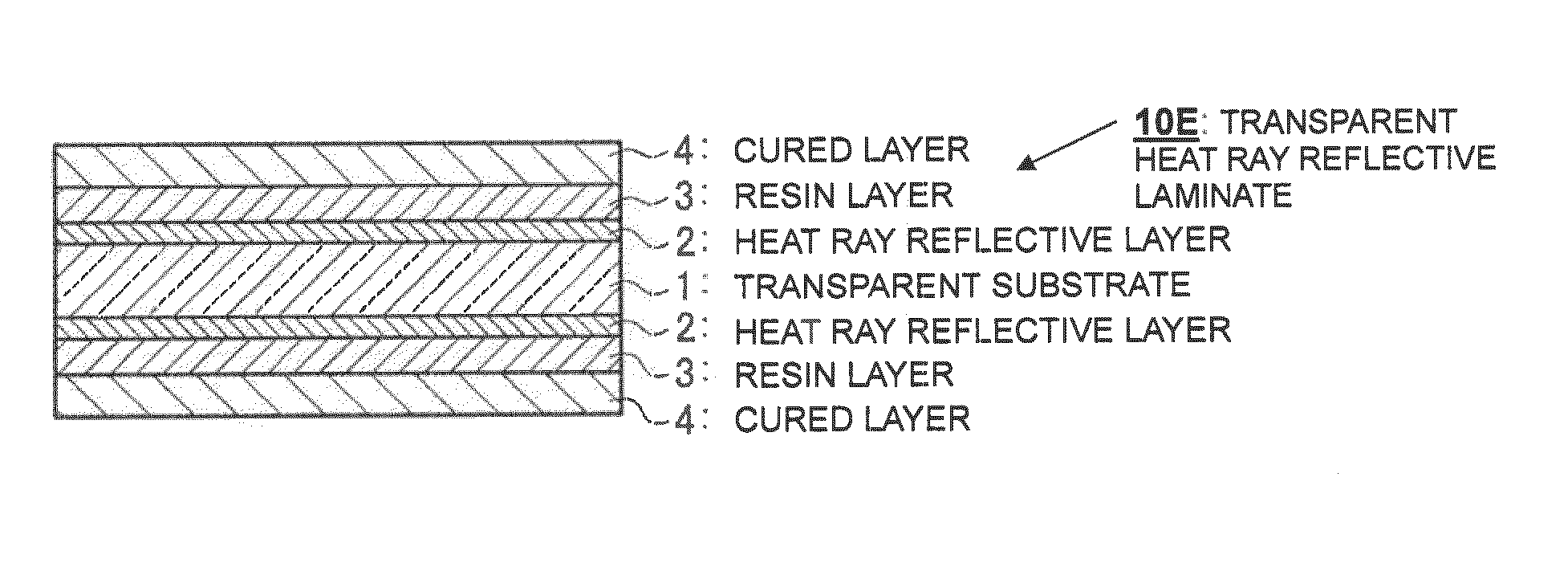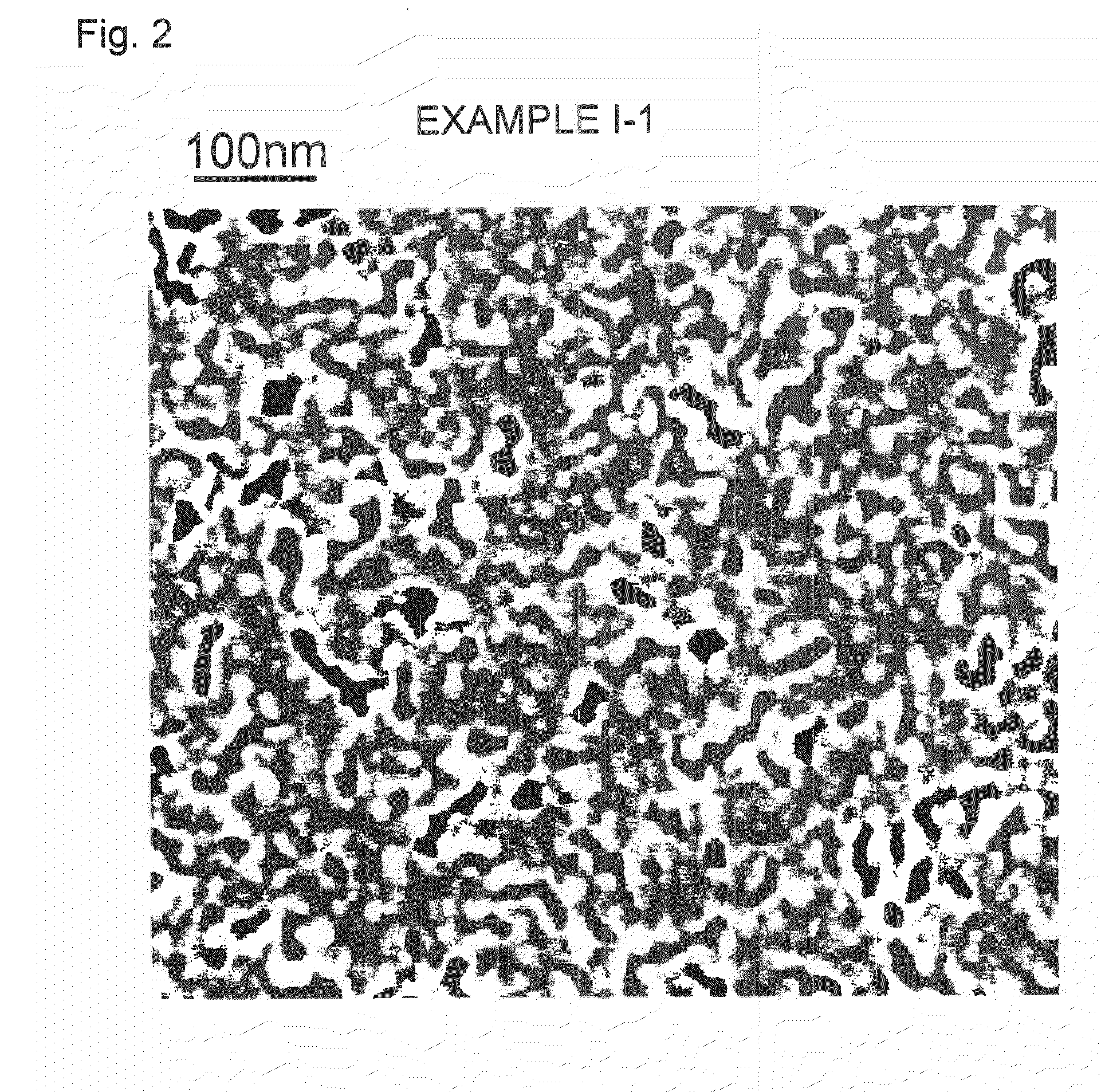Heat ray reflective film and laminate thereof, and coating fluid for forming heat ray reflective layer
- Summary
- Abstract
- Description
- Claims
- Application Information
AI Technical Summary
Benefits of technology
Problems solved by technology
Method used
Image
Examples
examples
[0500]Now, the present invention will be described in further detail with reference to Examples, but it should be understood that the present invention is by no means restricted to the following Examples.
[0501]Here, the evaluations of the heat ray reflective metal film (the same as the heat ray reflective layer or the heat ray reflective film) and the heat ray reflective laminate were carried out by the following methods.
[0502]The thickness of the heat ray reflective metal film (the heat ray reflective layer) was, when the substrate was glass, evaluated by means of a step / surface roughness / fine shape-measuring apparatus (P15, manufactured by KLA Tencor) from the step when a part of a sample was scraped off. The measuring conditions were such that the measured length was 1 mm, the scanning rate was 10 μm / sec, and the needle pressure was 0.2 mg.
[0503]The thickness of the heat ray reflective metal film (the heat ray reflective layer) was, when the substrate was a resin, evaluated by me...
example i-1
[0554]11.9 Parts by weight of a silver colloid aqueous solution(average particle size evaluated by a dynamic light scattering method: 23 nm, solid content concentration: 3.6 wt %, pH 5.1, citric acid content: 2.1 wt %) and 0.09 part by weight of a 3 wt % polyvinyl alcohol aqueous solution (“PVA117”, manufactured by Kuraray Co., Ltd., degree of polymerization: 1,700, Tg=83° C.) were mixed to prepare coating fluid 1-A.
[0555]0.8 mL of coating fluid I-A was dropped on a slide glass (manufactured by Matsunami Glass Ind., Ltd., substrate size: 76 mm×26 mm, thickness: 1.3 mm, solar absorptance: 6%, surface roughness: 0.2 nm) and applied by a spin coater (“1H-D7”, manufactured by Mikasa Co., Ltd.) under a condition of 500 rpm for 30 seconds, followed by heat-drying for 10 minutes on a hot plate (“HPD-3000”, manufactured by As One Corporation) at 70° C. Then, heat-drying was carried out for 10 minutes in a constant temperature dryer (“DO-450FPA”, manufactured by As One Corporation) at 150° C...
example i-2
[0556]Coating fluid I-B was prepared by carrying out the same operation as in Example I-1 except that the silver colloid aqueous solution was changed to 29.0 parts by weight, and the 3 wt % polyvinyl alcohol aqueous solution was changed to 1.0 part by weight.
[0557]Heat ray reflective metal film I-B was prepared by carrying out the same operation as in Example I-1 except that coating fluid I-B was used, and the time for heat-treatment at 150° C. after drying at 70° C. was changed to 30 minutes, and various evaluations were carried out. The evaluation results of heat ray reflective metal film I-B are shown in Tables 2a and 2b. Further, an SEM photograph of heat ray reflective metal film I-B is shown in FIG. 3.
PUM
| Property | Measurement | Unit |
|---|---|---|
| Temperature | aaaaa | aaaaa |
| Length | aaaaa | aaaaa |
| Fraction | aaaaa | aaaaa |
Abstract
Description
Claims
Application Information
 Login to View More
Login to View More - R&D
- Intellectual Property
- Life Sciences
- Materials
- Tech Scout
- Unparalleled Data Quality
- Higher Quality Content
- 60% Fewer Hallucinations
Browse by: Latest US Patents, China's latest patents, Technical Efficacy Thesaurus, Application Domain, Technology Topic, Popular Technical Reports.
© 2025 PatSnap. All rights reserved.Legal|Privacy policy|Modern Slavery Act Transparency Statement|Sitemap|About US| Contact US: help@patsnap.com



